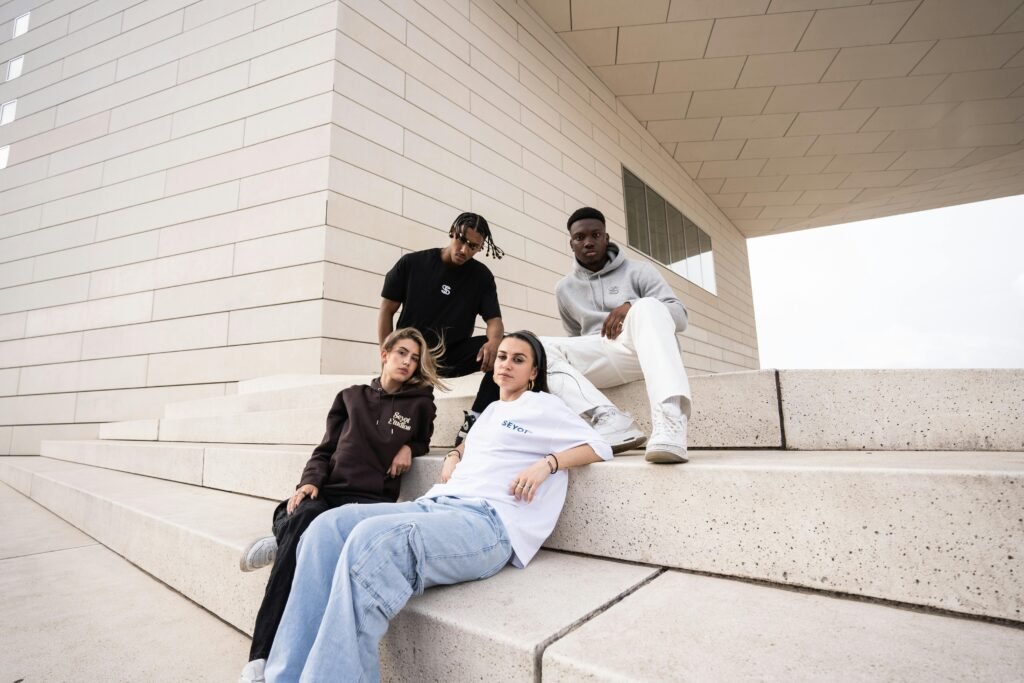Understanding Western European Fashion Trends

Western European fashion is characterized by a blend of classic elegance and contemporary style, shaped by deep cultural diversity and historical significance. Each country in the region boasts a unique approach to fashion, with France, Italy, and the United Kingdom leading the way in defining modern trends. The distinction between casual and formal attire varies across these nations, illustrating the rich tapestry of Western European aesthetics.
In France, fashion emphasizes effortless chic. Staple pieces such as tailored blazers, well-fitted trousers, and elegant scarves dominate wardrobes. French style often leans toward minimalism, focusing on quality fabrics and expert craftsmanship. Parisian women, in particular, are renowned for blending casual wear with sophisticated elements, creating looks that are both polished and approachable.
Italy, in contrast, exudes a flair for bold colors and tailored silhouettes. Italian fashion celebrates individuality, often embracing vibrant prints and luxurious materials. Key items like well-tailored suits and statement shoes reflect the nation’s dedication to high-quality design. Whether in Milan or Florence, Italians dress to express personality, making their style distinctively vibrant and expressive.
The United Kingdom offers a diverse array of styles, deeply influenced by its rich history and distinctive subcultures. British fashion merges traditional elements with contemporary trends. Iconic items such as trench coats, combat boots, and layered ensembles reflect not only practicality but also an eclectic style shaped by punk, goth, and mod movements. This makes the British aesthetic uniquely adaptive and expressive.
Across Western Europe, fashion trends shift with the seasons, driven by cultural events, economic factors, and societal changes. Local traditions continue to inspire contemporary wardrobes, resulting in a constant cycle of innovation and adaptation. Understanding the nuances of Western European fashion is essential for anyone aiming to emulate its sophisticated style.
Essential Wardrobe Staples for Western European Style

To truly embody the essence of Western European fashion, one must begin with a foundation of timeless wardrobe staples—pieces that offer both versatility and sophistication, the hallmarks of this regional style.
At the heart of this wardrobe is the tailored blazer. This indispensable item transitions seamlessly from day to night, offering structure and polish whether paired with jeans or dress trousers. Opt for classic colors such as navy, black, or gray to maximize versatility.
Another iconic piece is the classic trench coat. Both elegant and practical, the trench is ideal for layering and provides a polished silhouette in all types of weather. A neutral shade like beige, camel, or charcoal ensures it complements a wide range of outfits, making it suitable for everything from market strolls to evening dinners.
Chic scarves are a defining accessory in the Western European wardrobe. Whether silk in spring or wool in winter, a well-chosen scarf can add texture, color, and character to any outfit. Go for subtle prints or classic solids that can easily integrate into your existing wardrobe, providing both form and function.
Equally important are well-fitted trousers. Whether you prefer tailored slacks, cigarette pants, or chinos, the key lies in the fit—flattering, comfortable, and crisp. Stick to versatile colors such as navy, black, olive, or camel, which allow easy coordination with both casual tops and more refined pieces.
In terms of color palettes, Western European fashion often leans into earthy tones, muted neutrals, and understated hues. These choices allow for effortless mixing and layering, all while creating a polished and intentional look. Invest in high-quality fabrics—wool, cotton, linen, and silk—which not only elevate your appearance but also stand the test of time.
By curating these essential garments and accessories with intention, anyone can build a wardrobe that reflects the sophisticated practicality and timeless elegance of Western European style.
Accessorizing the Western European Look

Accessories play a defining role in curating the polished, effortless aesthetic that Western European fashion is known for. Far from being mere afterthoughts, these details elevate everyday outfits, offering a blend of functionality, personal expression, and cultural charm. Whether subtle or bold, the right accessories can transform a simple ensemble into something truly unforgettable.
Footwear is often where Western European outfits begin and end. In this style ethos, shoes are seen as an extension of one’s persona. Think sleek leather boots, refined loafers, or classic ballet flats—each chosen with intention and attention to craftsmanship. Neutrals and timeless patterns dominate, offering versatility and quiet elegance. For more casual moments, minimalist white sneakers or understated ankle boots can offer a smart yet comfortable alternative without compromising on style.
Handbags and backpacks in the Western European wardrobe emphasize clean lines and quiet luxury. Structured silhouettes—like a leather crossbody, a canvas tote, or a petite clutch—enhance the tailored nature of the region’s fashion while serving everyday practicality. Materials such as pebbled leather or waxed canvas are favored for their durability and visual texture. The key lies in selecting pieces that balance form and function, adding polish without excess.
When it comes to headwear, few accessories are as culturally iconic. Berets, especially in French fashion, lend a romantic, urban flair, while fedoras or felt hats offer a touch of classic sophistication during the colder months. Summer might bring in woven straw hats, ideal for city strolls or countryside escapes. A well-chosen hat speaks volumes—both about your style and your confidence.
Jewelry in Western European fashion tends to whisper, not shout. The aesthetic leans toward understated elegance—simple stud earrings, dainty necklaces, or a timeless wristwatch. The goal is always to complement rather than compete with the outfit. Layering delicate pieces or choosing a single standout accessory (like a sculptural cuff or a vintage brooch) adds depth while retaining restraint.
Ultimately, accessories in this fashion philosophy are about balance and intention. Each element should feel considered—never overdone—adding richness to the look and revealing something of the wearer’s personality. In Western European style, it’s not just about what you wear, but how confidently and thoughtfully you wear it.
Local Insights: Dressing with a Western European Flair

When aiming to dress like a Western European, perhaps the most valuable insights come not from runways, but from the people who live and breathe the fashion every day. Conversations with locals reveal a consistent theme: style here is as much about feeling as it is about fabric. It’s a lifestyle—an attitude—woven into the rhythm of daily life.
Comfort, for many, is the cornerstone of good style. Maria, a fashion enthusiast from Paris, describes her morning ritual as intuitive and grounded in ease. “I choose clothes that let me move, that don’t weigh me down,” she says, “but that still speak to who I am.” Her wardrobe, filled with effortlessly elegant staples—flowing trousers, crisp shirts, and well-loved flats—reflects a balance between freedom and finesse. “Comfort,” she adds, “is what gives you the confidence to carry your look through the day.”
That confidence, locals insist, is what truly defines Western European fashion. Javier, an architect in Barcelona, believes style begins with self-assuredness. “When I wear something that feels like me, I stand taller. That’s the point,” he explains. His wardrobe blends clean silhouettes with subtle statements—perhaps a sharply tailored jacket paired with bold socks or a vintage watch. His mantra: wear your personality, not just your clothes.
Individuality, then, becomes the thread that ties it all together. In Milan, Luna, a creative director, urges fashion lovers to treat their clothing like a canvas. “Take the classics—blazers, scarves, loafers—and make them your own,” she says. Her look often pairs timeless tailoring with unexpected pops: a neon belt, leopard-print boots, a geometric clutch. “Western European style isn’t about fitting in,” she notes. “It’s about reimagining tradition in a way that reflects who you are.”
By integrating these lived insights—comfort as empowerment, confidence as elegance, and individuality as a signature—you can build a wardrobe that does more than mirror a trend. It becomes a reflection of your story, told through pieces that move with you, elevate you, and most importantly, feel true to you.
















